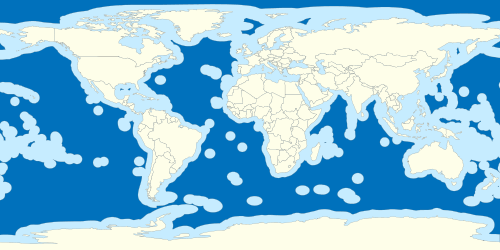Convention on the High Seas
 | |
| Signed | 29 April 1958 |
|---|---|
| Location | Geneva, Switzerland |
| Effective | 30 September 1962 |
| Parties | 63 states (at 2013) |
| Languages | Chinese, English, French, Russian and Spanish |
|
| |
The Convention on the High Seas is an international treaty which codifies the rules of international law relating to the high seas, otherwise known as international waters.[1] The treaty was one of four treaties created at the United Nations Conference on the Law of the Sea (UNCLOS I).[2] The treaty was signed 29 April 1958 and entered into force 30 September 1962.[3] As of 2013, the treaty had been ratified by 63 states.[4] The Convention on the High Seas was superseded by UNCLOS III, which introduced several new concepts to the law of maritime boundaries including Exclusive Economic Zones.

The treaty is divided into 37 articles:
Article 1: Definition of "high seas".
Article 2: Statement of principles
Article 3: Access to the sea for landlocked states
Articles 4–7: the concept of a Flag State
Article 8: Warships
Article 9: Other ships in government service
Articles 10–12: Safety, rescue
Article 13: Outlawing transport of slaves at sea
Articles 14–21: Piracy
Article 22: Boarding of merchant ships by warships
Article 23: Hot pursuit, that is, pursuit of a vessel across borders for the purposes of law enforcement
Articles 24–25: Pollution
Articles 26–29: Submarine cables and pipelines
Articles 30–37: legal framework, ratification, accession
References
- ↑ CONVENTION ON THE HIGH SEAS - Membership
- ↑ Text of CONVENTION ON THE HIGH SEAS (U.N.T.S. No. 6465, vol. 450, pp. 82-103)
- ↑ Convention on the High Seas, Done at Geneva on 29 April 1958
- ↑ United Nations Treaty Collection - Chapter XXI: Law of the Sea